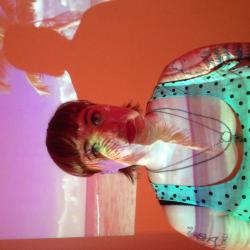Imagine a morning in the middle of December. Your alarm clock goes off, beckoning you to get out of bed and get your ass to work. You pull up the blinds hoping the morning light will wash over you and perk you up. Except it’s pitch black out there, and it will remain so, all fucking day long. What is one to do? How is one to proceed?
It’s pretty tempting to throw oneself back into bed and cocoon under the blankets, but the truth is we must forge ahead. For many, though, that is much easier said than done. They truly cannot find neither the willpower nor physical strength to fight the darkness.
This is a small idea of what it’s like to live with seasonal affective disorder (SAD), a debilitating mood condition that can affect up to 10% of the population in countries in high latitudes, such as Iceland. The condition is thought to be brought on by a decreased amount of daylight and the suppression of serotonin produced in the brain.
The most common symptoms are an increased need for sleep, increased appetite and feeling generally miserable. Other common symptoms can include cravings for carbohydrates, increased stress, irritability, social reclusion and a lack of interest in sex. Some extreme cases can even trigger manic episodes and suicidal feelings. Sounds fun, right?
Who gets bummed out?
In general, women are two to four times likelier than men to be affected. Young adults are more vulnerable than the middle-aged. Those with a history of clinical depression in their family are at risk. People who have never been exposed to long and consistent periods of darkness are also more prone to falling prey to the seasonal beast, and should watch out for signs of it rearing its ugly head.
So if you just moved here from, oh I don’t know, let’s say Florida, you might be in for a boring, awful treat.
As for actual Icelanders, they seem to have some luck. A study conducted in 1999 shows that as a general population, Icelanders have a fairly low prominence to get SAD compared to other high latitudinal countries. In addition, a concurrent study of Canadians of purely Icelandic descent in Manitoba showed that they had less frequency of having seasonal affective disorder than other Canadians, even in Manitoba. So there may be a genetic tolerance for darkness in Icelandic blood.
Speaking with Andrés Magnússon, a psychiatrist at Landspítali hospital, he told me that the prevalence of SAD in Icelanders is uncertain, although it seems to be no worse than in more southern locations, such as the North-Eastern United States. According to him, the condition seems to be an increasing problem the more north one goes up to a certain latitude, but it seems to taper off around the 50° mark. Still, he does not think that there is absolute immunity to it, and many Icelanders become plagued with lethargy and have difficulty functioning in the darkened months.
How to COPE
If you suspects you are experiencing SAD, that is to say, a depression in direct relation to the change of season with no depression during other seasons, then there are several ways to power through. Andrés recommends that one simply tries to expose themselves to as much natural daylight as possible. Although this is a bit of a challenge in Icelandic winters, there is still a bit of time to see some light in the middle of the day. The exposure to vitamin D is important in the production and release of serotonin from our neurotransmitters, so use your lunch hour to go to an outdoor pool, go skating on the weekends and ditch your curtains entirely.
If exposure to the little daylight there is isn’t sufficient, the most common and non-invasive form of treatment is light therapy. Using a full spectrum light bulb, one is to sit and stare into the light for 30 minutes to 2 hours a day, depending on the bulb’s intensity and the severity of SADness. Andrés tells me that specialists are unsure why this treatment is so successful, but it seems that the stimulation of the optical nerve resynchronizes the body clock, improving sleep patterns and energy levels.
One should consider medical treatment by a specialist if they have a prior psychiatric condition or mood disorder that is exacerbated by the seasonal change. For example, Andrés says that a person afflicted by manic depression can be strongly affected by the seasonal change, and this can have heavy repercussions. If shit gets really rough, don’t suffer in silence. Turn that winter frown upside down!
Buy subscriptions, t-shirts and more from our shop right here!
















